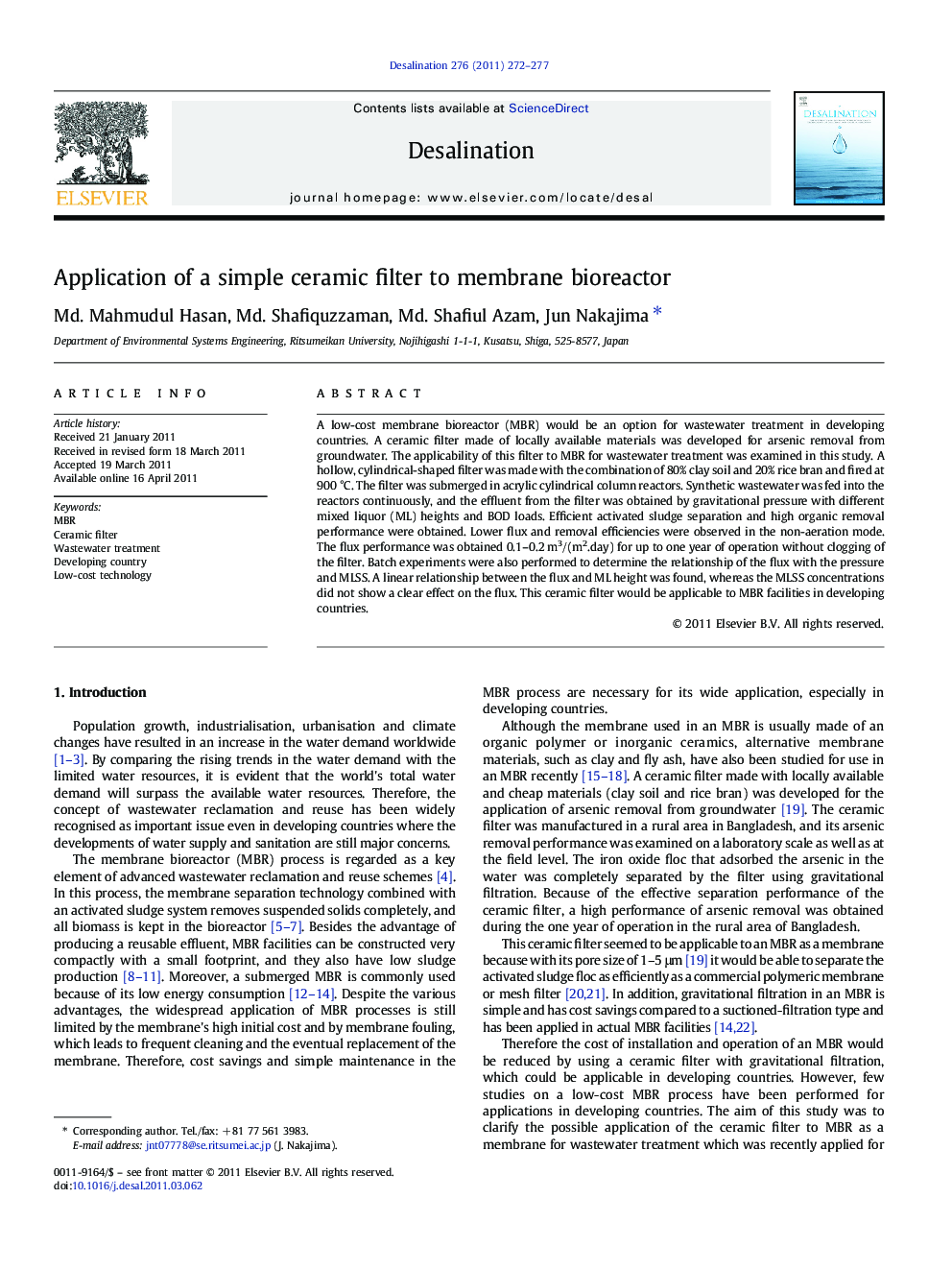| Article ID | Journal | Published Year | Pages | File Type |
|---|---|---|---|---|
| 624855 | Desalination | 2011 | 6 Pages |
A low-cost membrane bioreactor (MBR) would be an option for wastewater treatment in developing countries. A ceramic filter made of locally available materials was developed for arsenic removal from groundwater. The applicability of this filter to MBR for wastewater treatment was examined in this study. A hollow, cylindrical-shaped filter was made with the combination of 80% clay soil and 20% rice bran and fired at 900 °C. The filter was submerged in acrylic cylindrical column reactors. Synthetic wastewater was fed into the reactors continuously, and the effluent from the filter was obtained by gravitational pressure with different mixed liquor (ML) heights and BOD loads. Efficient activated sludge separation and high organic removal performance were obtained. Lower flux and removal efficiencies were observed in the non-aeration mode. The flux performance was obtained 0.1–0.2 m3/(m2.day) for up to one year of operation without clogging of the filter. Batch experiments were also performed to determine the relationship of the flux with the pressure and MLSS. A linear relationship between the flux and ML height was found, whereas the MLSS concentrations did not show a clear effect on the flux. This ceramic filter would be applicable to MBR facilities in developing countries.
Research highlights► Application of a ceramic filter to MBR for wastewater treatment was investigated. ► The flux, BOD removal, and maintenance were examined in laboratory experiments. ► Experiments were performed by gravitational pressure with different conditions. ► The filter could separate the activated sludge with the complete removal of the BOD. ► The filter would be applicable in MBR facilities in developing countries.
